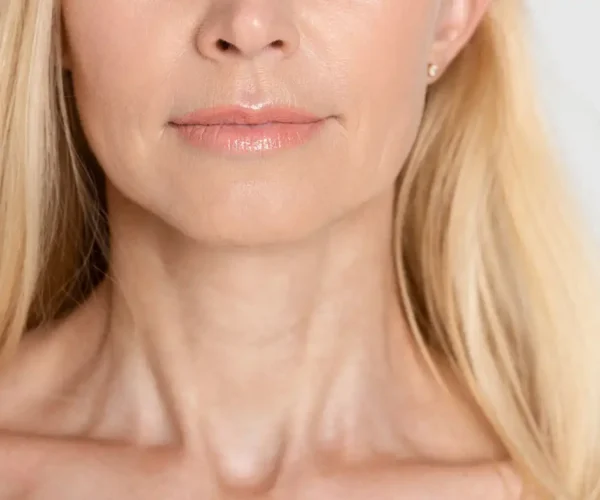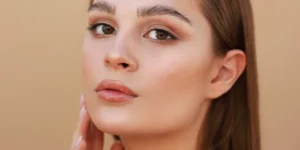Jowls—those sagging areas along the lower face and jawline—are a common sign of aging and volume loss. This guide explains the top skin tightening for jowls options, compares non-surgical and minimally invasive approaches, and helps you choose the best jowl treatment for your goals. Throughout the article you’ll see practical pros/cons, expected longevity, and typical cost considerations. We also highlight a trusted clinic option if you’re ready to take the next step.
Why Jowls Form and Who Gets Them
Jowls develop because of a combination of aging, gravity, collagen loss, and shifting facial fat pads. Genetics, sun damage, and lifestyle factors (smoking, weight fluctuations) also affect how quickly jowls appear. Understanding the cause helps you pick an appropriate skin tightening for jowls plan—whether that’s a non-surgical jowl lift, energy-based therapy, or a minimally invasive procedure.
Top Technologies for Skin Tightening for Jowls
1. Microfocused Ultrasound (Ultherapy / HIFU)
How it works: Focused ultrasound energy targets deep layers of tissue (including the SMAS) to stimulate collagen production and tissue tightening. Ideal for mild-to-moderate jowl laxity.
Why consider it: Ultherapy (a leading branded microfocused ultrasound system) is FDA-cleared for lifting skin on the neck and under the chin and is widely used to improve jowls. Clinical and manufacturer information describe the device as an option for non-surgical jowl lift candidates seeking skin tightening without incisions.
2. Fractional Radiofrequency + Microneedling (Morpheus8 and similar)
How it works: Tiny needles deliver radiofrequency (RF) energy under the skin, producing controlled micro-injuries and heating that stimulate collagen remodeling and tissue contraction. This is useful on the lower face where skin texture and laxity both matter.
Why consider it: Devices like Morpheus8 are commonly used for skin tightening for jowls because they combine resurfacing with deeper RF heating, improving both firmness and texture. There is peer-reviewed literature and clinical reports describing effective facial use of fractional RF microneedling.
3. Thermage and Monopolar Radiofrequency
How it works: Non-ablative RF energy heats deeper layers to induce collagen contraction over time. Typically one session with gradual improvement over months.
Why consider it: Thermage-type devices are long-established options for skin tightening. They tend to be safer for people who want non-invasive treatments with minimal downtime, though results can be more subtle than energy focused on deeper layers.
4. Thread Lifts (PDO / PLLA threads)
How it works: Absorbable barbed threads are inserted under the skin to create an immediate lift and to stimulate collagen formation as they resorb.
Why consider it: Thread lifts provide an immediate contour change and can be combined with other energy devices. Expect moderate lift for mild-to-moderate jowling; results vary and are generally temporary (commonly months to a couple of years depending on thread type and patient factors).
5. Surgical & Minimally Invasive Options (Mini-facelift, SMAS tightening)
How it works: Surgical approaches reposition deeper tissues and remove or re-drape excess skin for longer-lasting jawline definition.
Why consider it: For advanced jowl formation, a surgical facelift or mini-facelift remains the most durable solution. However, these come with typical surgical downtime and risks. Studies and surgical reviews show surgery provides the most long-lasting structural improvement compared with non-surgical options.
Do Non-Surgical Jowl Tightening Technologies Really Work?
Short answer: yes—when matched to the right degree of laxity and expectations. Energy-based treatments (Ultherapy/HIFU, RF, RF microneedling) stimulate collagen and can noticeably improve mild-to-moderate jowls over weeks to months. For deeper sagging or severe tissue descent, non-surgical jowl lift technologies can help but are less likely to match surgical outcomes. Choosing the best jowl treatment depends on how much lift you need, your tolerance for downtime, budget, and desired longevity.
Which Skin Tightening Technology Lasts the Longest for Jowls?
Longevity depends on the method and individual factors. In general:
- Thread lifts: immediate effect, typically lasting ~6–18+ months depending on thread type and patient factors.
- RF microneedling (Morpheus8): clinical experience suggests durable improvement over 1–3 years and in some reports longer with maintenance.
- Ultherapy / HIFU: results commonly build over 3–6 months and may last around 12–24 months or longer for some patients; repeat sessions recommended for maintenance.
- Surgical facelift: the most durable structural correction, often several years to a decade depending on technique and aging.
How Much Does Skin Tightening for Sagging Jowls Cost?
Costs vary widely by geography, provider expertise, and the specific device or procedure. Rough price ranges (ballpark):
- Ultherapy / HIFU: mid-to-high range for non-surgical treatments (cost varies by treated area).
- Morpheus8 / RF microneedling: mid-range per session; multiple sessions sometimes recommended.
- Thread lifts: can be lower or mid-range depending on number and type of threads used.
- Surgical mini-facelift or facelift: significantly higher, reflecting operating room and surgical skill costs.
Ask your provider for a personalized quote. Many clinics offer consultations to compare the best jowl treatment paths (combos are common—e.g., threads + RF + filler for contour).
Choosing the Best Jowl Treatment: A Simple Decision Checklist
1. Degree of laxity
Mild laxity → energy-based or RF microneedling. Moderate → consider combined approaches or thread lift. Severe → surgical consultation recommended.
2. Desired downtime
Little-to-no downtime → non-surgical jowl lift options like Ultherapy, HIFU, or Thermage. Moderate downtime → Morpheus8 (some redness/swelling). Surgical → weeks of recovery.
3. Longevity expectations & budget
If you want the longest-lasting contour and have a surgical tolerance, consult a plastic surgeon. If you prefer gradual, low-downtime improvement, energy devices can be excellent—just plan for maintenance sessions. The “best jowl treatment” balances your goals, budget, and tolerance for recovery.
Combining Treatments for Better Results
Many providers combine approaches: a non-surgical jowl lift (Ultherapy/HIFU) to tighten deeper layers + Morpheus8 to improve texture + thread lift for immediate contour, plus conservative fillers to restore lost volume along the jawline. Combination protocols often produce more harmonious, longer-lasting improvements than any one therapy alone. Consult a qualified clinician to design a personalized plan.
Risks, Side Effects, and Safety
Common side effects across non-surgical options include temporary redness, swelling, bruising, and tenderness. More serious but rare events depend on technique and device—always choose an experienced practitioner and discuss risks, downtime, expected outcomes, and realistic goals.
Where to Get Started — Parpar’s Jowls Treatment
If you’re interested in professional evaluation, Parpar offers jowls-focused consultations and treatments tailored to individual needs. Learn more about their jowl treatment services here: Parpar Jowls Treatment. Parpar can help you decide whether the best jowl treatment for you is a non-surgical jowl lift, a series of energy treatments, or a combined approach.
Quick FAQ (Keywords Included)
What is the best skin tightening treatment for jowls?
The best skin tightening treatment for jowls depends on the severity of sagging and your goals. For mild jowls, non-surgical jowl lift options like Ultherapy or RF microneedling often work well; for more advanced jowls, surgical options may be superior.
Do non-surgical jowl tightening technologies really work?
Yes—energy-based devices and RF microneedling stimulate collagen and can produce meaningful improvement in many people, especially for mild-to-moderate jowling. Outcome depends on proper device selection and provider skill.
Which skin tightening technology lasts the longest for jowls?
Surgical lifts last longest; among non-surgical options, RF microneedling (e.g., Morpheus8) and combination protocols can offer durable results for a year or more, and periodic maintenance can extend benefits.
How much does skin tightening for sagging jowls cost?
Costs vary widely. Expect non-surgical procedures to be mid-range per session and surgery to be significantly higher. Always request a personalized quote from a reputable clinic.
References & Further Reading
For more detailed clinical information and device indications, see:
- Ultherapy (microfocused ultrasound) — Ultherapy official information.
- Fractional RF microneedling (Morpheus8) — dermatologic applications and clinical literature.
- Thread lifts longevity & considerations — clinical summaries and reviews.
- General surgical facelift reviews and outcomes.
Final Thoughts
“Skin tightening for jowls” covers a spectrum—from subtle non-surgical jowl lift options like Ultherapy and RF microneedling to thread lifts and surgical facelifts. The best jowl treatment for you depends on how much lift you want, your comfort with downtime, and your budget. If you’d like, Parpar’s team can evaluate your jawline and recommend a personalized plan: Parpar Jowls Treatment.

